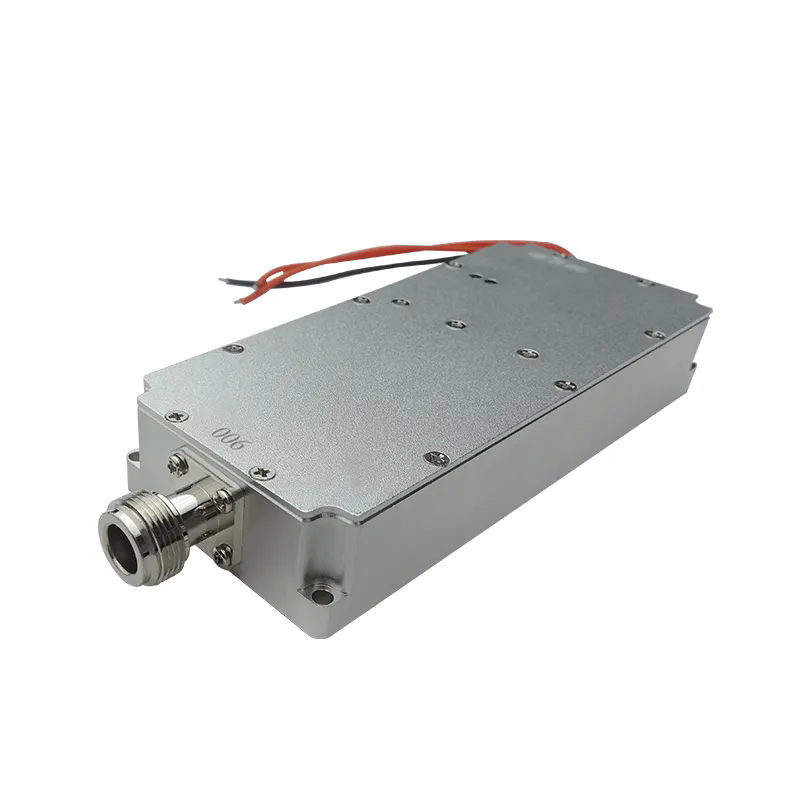Detailed Overview of Handheld Drone Signal Jammer
2024-07-30
A handheld drone signal jammer is a device designed to disrupt the communication between a drone and its operator, effectively preventing the drone from receiving or transmitting signals. These jammers can be used for security purposes, such as preventing unauthorized drone flights in restricted areas, or for law enforcement and military operations. Here’s a detailed overview of handheld drone signal jammers:
Key Features:
1. Signal Disruption:
- Frequency Bands: Jams various frequency bands used by drones, including Wi-Fi, GPS, and communication signals. Common frequencies include 2.4 GHz and 5.8 GHz for control and video transmission, and GPS frequencies like 1.5 GHz.
- Range of Operation: Effective over a specified range, typically from a few meters to several hundred meters, depending on the device's power and design.
2. Power Source:
- Battery-Powered: Operated using rechargeable batteries or disposable batteries, providing portability and ease of use in the field.
- Battery Life: Varies based on the jammer’s power output and usage patterns, typically ranging from a few hours to several hours of continuous use.
3. Control Interface:
- User Controls: Includes buttons or dials to select frequencies or control power levels.
- Display Screen: Some models feature a display screen to provide information on signal strength, battery status, or frequency settings.
4. Design and Build:
- Portability: Designed to be handheld, lightweight, and ergonomic for easy maneuverability.
- Durability: Built to withstand rough handling and various environmental conditions.
5. Legal and Compliance Considerations:
- Regulations: Operation of signal jammers is subject to strict regulations in many countries. Unauthorized use can lead to legal penalties and interference with legitimate communications.
- Licensing: Some regions require licenses or permits for using jamming devices, especially for security or commercial purposes.
Benefits:
1. Security:
- Prevent Unauthorized Drone Use: Effective for preventing drones from entering restricted or sensitive areas, such as airports, military installations, or private properties.
- Mitigate Risks: Helps reduce the risks associated with drones, such as surveillance, espionage, or potential threats.
2. Control:
- Regain Control: Can be used by security personnel or law enforcement to regain control of airspace and enforce no-fly zones.
- Immediate Action: Provides a quick response to unauthorized drone activity.
3. Portability:
- Ease of Use: Handheld design allows for easy carrying and operation in various situations.
Applications:
1. Security and Surveillance:
- Protecting Sensitive Areas: Used at critical infrastructure sites, government buildings, and private properties to prevent unauthorized drone access.
- Event Security: Deployed at large public events to manage drone activity and ensure safety.
2. Law Enforcement:
- Interdiction: Used by law enforcement agencies to intercept and neutralize rogue drones in public spaces or during operations.
3. Military Operations:
- Counter-Drone Measures: Utilized in military settings to disable enemy drones and protect personnel and assets.
4. Airport Security:
- Airspace Management: Prevents drones from interfering with airport operations and flight paths.
Considerations:
1. Legal Restrictions:
- Compliance: Ensure compliance with local regulations and laws regarding the use of signal jammers to avoid legal issues and unintended interference.
- Permits: Obtain any necessary permits or licenses required for operating a signal jammer in your region.
2. Effectiveness:
- Range Limitations: The effective range of the jammer may vary based on the power output and environmental conditions.
- Interference: May unintentionally interfere with other legitimate communications if not used properly.
3. Safety:
- Operator Safety: Follow safety guidelines to avoid accidents or misuse of the device.
- Drone Users: Consider the potential impact on innocent drone users and ensure that the use of the jammer is justified and targeted.
Handheld drone signal jammers can be a valuable tool for managing unauthorized drone activity, but their use must be carefully regulated and controlled to ensure compliance with legal requirements and minimize unintended consequences.



